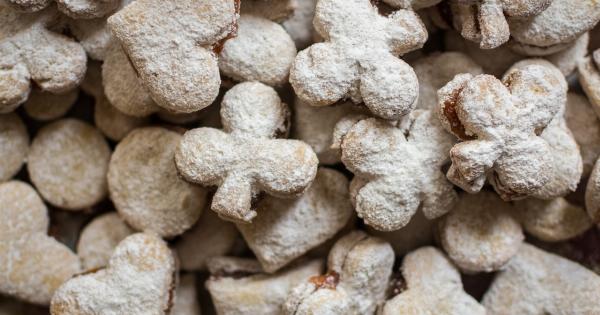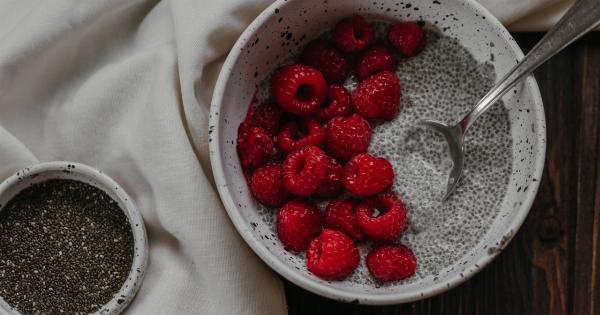Stroke is a serious medical condition that occurs when the blood supply to the brain is interrupted or reduced, resulting in the death of brain cells. It is one of the leading causes of death and disability worldwide.
While there are several risk factors for stroke, including age, genetics, and certain medical conditions, lifestyle factors play a significant role in determining an individual’s risk. One of the most influential factors is diet. In this article, we will explore how changing your eating habits can effectively lower the risk of stroke.
The Link Between Diet and Stroke
Multiple scientific studies have shown a strong association between diet and the risk of stroke.
Unhealthy eating habits, such as consuming excessive amounts of saturated fats, trans fats, cholesterol, and sodium, have been linked to an increased risk of developing stroke. On the other hand, adopting a healthy diet that is rich in essential nutrients can significantly reduce the risk.
1. Reduce Sodium Intake
A high intake of sodium is a major risk factor for stroke. Excessive sodium intake can lead to high blood pressure, which is a significant cause of both ischemic and hemorrhagic strokes.
To lower your sodium intake, avoid processed foods, fast foods, and canned foods, as they often contain high levels of sodium. Instead, opt for fresh fruits, vegetables, whole grains, and lean proteins.
2. Increase Consumption of Fruits and Vegetables
Fruits and vegetables are excellent sources of essential vitamins, minerals, and dietary fiber. They are low in calories and high in antioxidants, which promote overall cardiovascular health.
Studies have found that individuals who consume a diet rich in fruits and vegetables have a lower risk of stroke compared to those who consume fewer of these foods. Aim for at least five servings of fruits and vegetables a day.
3. Choose Healthy Fats
Not all fats are created equal. While saturated fats and trans fats increase the risk of stroke, healthy fats have the opposite effect.
Omega-3 fatty acids, found in fatty fish like salmon, mackerel, and sardines, have been shown to reduce the risk of strokes caused by blood clots. Olive oil, avocados, and nuts also contain healthy fats and should be included in a stroke-preventive diet.
4. Limit Saturated and Trans Fats
Saturated and trans fats are commonly found in processed foods, fried foods, pastries, and red meat. These fats can raise levels of bad cholesterol in the blood, leading to the formation of fatty deposits in the arteries.
Over time, this can result in blocked blood vessels and an increased risk of stroke. Instead, choose lean sources of protein, such as poultry, fish, and legumes, and opt for cooking methods like grilling, baking, or steaming.
5. Consume More Whole Grains
Whole grains, such as brown rice, whole wheat bread, and oats, are rich in fiber, vitamins, and minerals. They help regulate blood pressure and improve overall heart health.
Research suggests that a diet high in whole grains can reduce the risk of ischemic stroke. Replace refined grains with whole grains whenever possible to reap the benefits.
6. Limit Added Sugars
Excessive consumption of added sugars, such as those found in sugary beverages, desserts, and processed snacks, can contribute to obesity, diabetes, and high blood pressure. These conditions increase the risk of stroke.
It is crucial to limit your intake of added sugars and choose healthier alternatives like water, herbal tea, and fresh fruits when craving something sweet.
7. Enjoy Moderate Amounts of Alcohol
Consuming alcohol in moderation has been associated with a lower risk of ischemic stroke. However, excessive alcohol intake can raise blood pressure and increase the risk of hemorrhagic stroke.
It is recommended to limit alcohol consumption to one drink per day for women and two drinks per day for men.
8. Stay Hydrated
Dehydration can contribute to the development of blood clots, which can lead to a stroke. It is essential to stay adequately hydrated by drinking enough water throughout the day. Adequate hydration also helps maintain healthy blood pressure levels.
9. Avoid Excessive Caffeine
While moderate caffeine consumption is generally safe, excessive intake can elevate blood pressure, potentially increasing the risk of stroke. Limit your consumption of caffeinated beverages such as coffee, energy drinks, and certain teas.
Opt for decaffeinated alternatives or herbal teas for a healthier choice.
10. Seek Professional Guidance
It is important to note that individual nutritional needs may vary based on specific health conditions and personal factors.
If you have concerns about your diet and its impact on stroke prevention, consult a registered dietitian or a healthcare professional who can provide personalized guidance and recommendations.
Conclusion
Changing your eating habits can significantly reduce the risk of stroke by promoting cardiovascular health, maintaining healthy blood pressure, and reducing the likelihood of developing conditions like obesity and diabetes.
Incorporate a well-rounded diet that includes plenty of fruits, vegetables, whole grains, lean proteins, and healthy fats. Limit sodium, saturated fats, trans fats, and added sugars, and consume alcohol and caffeine in moderation. By making these dietary changes, you can take a proactive approach in reducing your risk of stroke and improving your overall well-being.






























